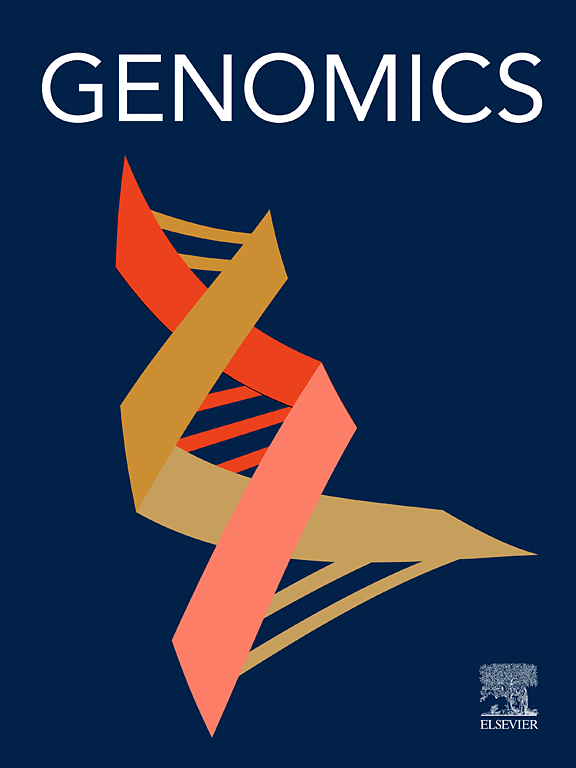Identification of potential modulators of intrauterine adhesion pathogenesis with RNA sequencing, histology and in vitro assays
IF 3
2区 生物学
Q2 BIOTECHNOLOGY & APPLIED MICROBIOLOGY
引用次数: 0
Abstract
Intrauterine adhesion (IUA), also referred to as intrauterine stenosis or synechiae, is a prevalent gynecological issue, which is characterized by the fusion of the walls of the intrauterine canal. However, the molecular changes during its pathogenesis are still unclear. In the present work, tissue samples from patients with IUA and normal endometrial tissues from healthy subjects were collected, and then RNA sequencing and bioinformatics analyses were performed to screen the differentially expressed genes (DEGs). Subsequently, immunohistochemistry was used for detecting the protein expression level of the representative genes including XDH, VNN1, CD36, and after transfection, enzyme-linked immunosorbent assay and Western blotting were used to evaluate their functions in regulating inflammatory response and the expression level of matrix metalloproteinases. It was revealed that multiple genes were dysregulated in the pathological tissues of patients with IUA, and these DEGs were associated with multiple biological processes and signal pathways including Hedgehog pathway. DEGs including XDH, VNN1, CD36 were also highly expressed in IUA tissues at protein level, and their expression levels correlated with the expression levels of inflammation mediators NLRP3 and STING. XHD, VNN1 and CD36 also promoted the expression and secretion of TNF-α, IL-1β and IL-6 in ishikawa cells, and up-regulated the expression level of MMP-2 and MMP-9. Collectively, our data suggested that Hedgehog signaling is a potential crucial pathway in IUA pathogenesis, and some DEGs contribute to endometrial fibrosis by regulating inflammatory response and matrix remodeling.
利用RNA测序、组织学和体外实验鉴定宫内粘连发病机制的潜在调节剂。
宫腔粘连(Intrauterine adhesion, IUA)又称宫腔狭窄或粘连,是一种常见的妇科疾病,其特征是宫腔管壁融合。然而,其发病过程中的分子变化尚不清楚。本研究从IUA患者和健康受试者的正常子宫内膜组织中采集组织样本,通过RNA测序和生物信息学分析筛选差异表达基因(DEGs)。随后,采用免疫组化方法检测XDH、VNN1、CD36等代表性基因的蛋白表达水平,转染后采用酶联免疫吸附法和Western blotting评价其调节炎症反应和基质金属蛋白酶表达水平的功能。结果表明,IUA患者病理组织中存在多个基因异常,这些基因异常与包括Hedgehog通路在内的多种生物学过程和信号通路相关。在IUA组织中,XDH、VNN1、CD36等deg也在蛋白水平上高表达,其表达水平与炎症介质NLRP3、STING的表达水平相关。XHD、VNN1和CD36还能促进石川细胞中TNF-α、IL-1β和IL-6的表达和分泌,上调MMP-2和MMP-9的表达水平。总的来说,我们的数据表明,Hedgehog信号是IUA发病机制的一个潜在关键途径,一些deg通过调节炎症反应和基质重塑来促进子宫内膜纤维化。
本文章由计算机程序翻译,如有差异,请以英文原文为准。
求助全文
约1分钟内获得全文
求助全文
来源期刊

Genomics
生物-生物工程与应用微生物
CiteScore
9.60
自引率
2.30%
发文量
260
审稿时长
60 days
期刊介绍:
Genomics is a forum for describing the development of genome-scale technologies and their application to all areas of biological investigation.
As a journal that has evolved with the field that carries its name, Genomics focuses on the development and application of cutting-edge methods, addressing fundamental questions with potential interest to a wide audience. Our aim is to publish the highest quality research and to provide authors with rapid, fair and accurate review and publication of manuscripts falling within our scope.
 求助内容:
求助内容: 应助结果提醒方式:
应助结果提醒方式:


